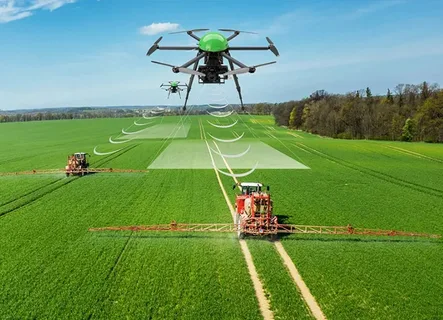In recent years, precision agriculture has revolutionized farming practices, primarily benefiting large-scale commercial farms. However, the growing interest in precision agriculture for small-scale farmers presents both unique opportunities and significant challenges. This article explores how small-scale farmers can leverage precision agriculture technologies to enhance productivity while navigating the hurdles involved.
What is Precision Agriculture?
Precision agriculture refers to the use of advanced technologies such as GPS, sensors, drones, and data analytics to monitor and manage farming operations with pinpoint accuracy. By optimizing resource use—such as water, fertilizers, and pesticides—farmers can improve crop yields and reduce environmental impact.
Opportunities for Small-Scale Farmers
1. Increased Efficiency and Productivity
For small-scale farmers, precision agriculture offers the potential to maximize crop production on limited land. Tools like soil moisture sensors and drone imagery help farmers make data-driven decisions about irrigation, planting, and harvesting times, leading to better yields.
2. Cost Savings
Although initial investments may be a concern, precision agriculture can reduce input costs over time. By applying fertilizers and pesticides only where needed, small-scale farmers can minimize waste and save money, improving overall profitability.
3. Access to Market Information
Many precision agriculture platforms provide real-time market and weather data, enabling small-scale farmers to plan their activities better and respond quickly to market demands or changing climatic conditions.
Challenges Faced by Small-Scale Farmers
1. High Initial Costs and Technology Access
One of the biggest challenges in adopting precision agriculture for small-scale farmers is the cost of technology. Many precision tools require significant upfront investment, which can be prohibitive for farmers with limited financial resources.
2. Lack of Technical Knowledge and Training
Effective use of precision agriculture technologies requires training and technical know-how. Small-scale farmers often lack access to education or extension services to build this capacity, making it harder to utilize these tools effectively.
3. Infrastructure and Connectivity Issues
Many rural areas where small-scale farmers operate have limited internet access or electricity, which restricts the use of digital precision agriculture tools that rely on connectivity and power.
Overcoming the Challenges
To truly unlock the benefits of precision agriculture for small-scale farmers, collaborative efforts from governments, NGOs, and the private sector are essential. Subsidies, affordable technology packages, and farmer training programs can bridge the gap, enabling more inclusive access.
Conclusion
Precision agriculture for small-scale farmers holds tremendous promise for transforming smallholder farming into a more efficient, sustainable, and profitable enterprise. While challenges related to cost, knowledge, and infrastructure persist, strategic interventions and innovations tailored to small-scale needs can make precision farming an accessible reality for these vital contributors to global food security.


